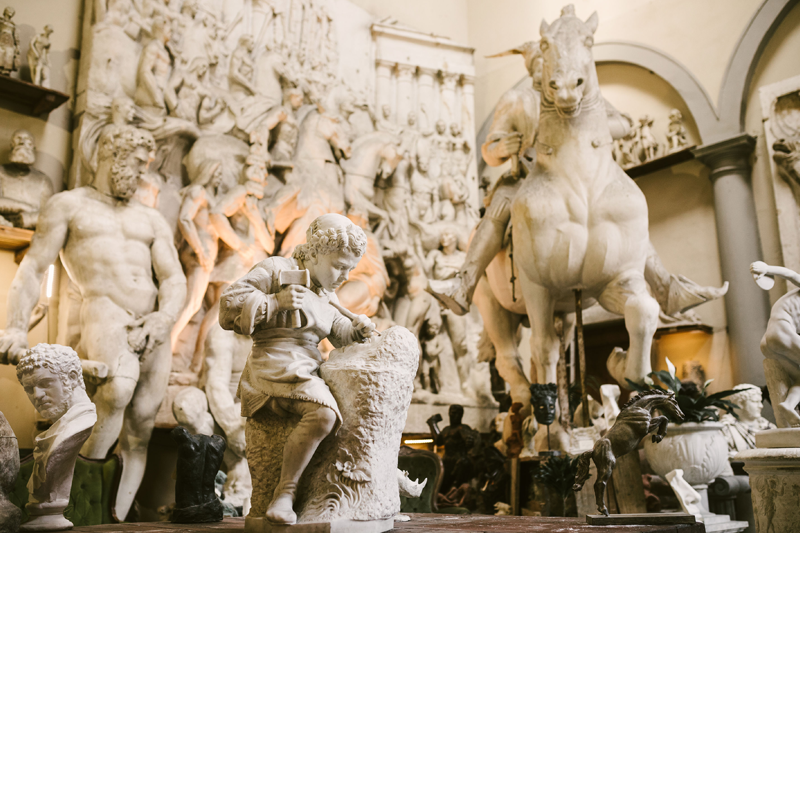
The neighborhood
of San Frediano in FLORENCE


SAN FREDIANO
is a neighborhood located in the Oltrarno, on the left bank of the Arno river, in Florence’s historical city center. Less sumptuous and luxurious than other districts well known to tourists arriving in the city, it is characterized by an authentic and folk atmosphere full of history, not only art-wise, but of everyday life too.
A neighbourhood of ancient streets, alleys, houses, squares, lively and teeming with activity.


In SAN FREDIANO there are restaurants and trattorias for every taste, clubs and bars to have a coffee or an aperitif in good company, as well as the greengrocer, the butcher, the baker, the delicatessen shop, the bakery and the wonderful artisan shops of Old Florence.


You can still enjoy the traditional handwork and craftmanship of glass, scagliola, wrought iron, inlay and wood restoration in workshops and artisans’ shops. Driven by that same passion, artisans bind books, create jewels, lampshades, art prints and much more.
Fun and interesting to see!

San Frediano ARTISTIC TREASURES
you will not want to miss:

CHURCH OF SANTA MARIA DEL CARMINE
Destroyed by a fire in 1771, it was rebuilt inside on a project by GIUSEPPE RUGGIERI and finished in 1782 by GIULIO MANNAIONI. The church was founded at the end of the 13th century and on the sides, it is still possible to admire the traces of the primitive Gothic structure, while the stone and brick façade remained unfinished. In addition to the “Crocifissione” by VASARI, and the vault with the “Ascensione” of GIUSEPPE ROMEI, framed in the illusionistic quadrature of DOMENICO STAGI, the church has become famous for the

BRANCACCI CHAPEL which houses the frescoes by MASACCIO and MASOLINO. In the adjacent convent, you will admire “the Last Supper” by ALESSANDRO ALLORI, in which the artist’s self-portrait appears.
CHURCH OF SANTO SPIRITO
BRUNELLESCHI began designs for the CHURCH OF SANTO SPIRITO in 1444. The architect died long before the construction was finished. The church was finally completed in 1487 by GIOVANNI DA GAIOLE and SALVI D’ANDREA. The high bell tower, instead, is the work of BACCIO D’AGNOLO (1502).

In 1564 BARTOLOMEO AMMANNATI began the great cloister and the church structure was reinterpreted several times following the initial style. The façade, however, was never finished and to this day it looks like a plastered wall. Three large naves characterize the interior of the church of SANTO SPIRITO and the style is one of the most outstanding examples of Renaissance architecture. Inside, you will have the chance to admire many works of art such as frescoes, paintings and sculptures: among the various artists you will find works of art by ORCAGNA, GIULIANO DA SAN GALLO and SANSOVINO. Do not miss the wooden crucifix by MICHELANGELO and the works of FILIPPINO LIPPI and SANSOVINO.
CHURCH OF SAN FREDIANO IN CESTELLO
The church stands in the place where there used to be the Monastery of Santa Maria degli Angeli, founded in 1450 and ceded in 1628 to the Cistercian monks, who then commissioned ANTONIO CERRUTI to build the current church. The works began in 1680 and were completed in 1689, when ANTONIO FERRI built the tholobate dome. In 1783 the church was transformed into a parish and the convent was closed and transformed into the seat of the archepiscopal seminary. The church, dedicated to SAN FREDIANO, an early Christian Irish pilgrim who became bishop of Lucca, is considered one of the most

significant examples of Florentine Baroque: its dome is set on a very slender tholobate, and the church still retains a bare stone and brick facade that used to characterize many churches in Florence, before they started to be covered with marble facades.
TABERNACLE
OF SAN GIOVANNI
The Tabernacle’s detached fresco in via San Giovanni (San Giovanni street) depicts the “Madonna in trono con il Bambino e Angeli” (Madonna enthroned with the Child and Angels) by the MAESTRO DI SIGNA. It dates back to the first decades of the fifteenth century. The fresco was initially located in Borgo San Frediano, on the hospital wall for pilgrims named after St. Lucia.

The fresco depicts the Madonna on the throne holding out her breast to the Christ Child surrounded by the four Angels; the scene alludes to this place of charity which gave both material and spiritual support to travellers. In 1642, to create the opening for a new door in the building, which became then the Archangel Raphael’s Monastery, the fresco was detached from its original location and transported to Via San Giovanni, along with the underlying portion of masonry. The classical marble aedicule where the fresco is now enclosed was built two centuries later, in 1852, by the owner of the house Giuseppe Vitali, to house the painting after the restoration of 1825, as evidenced by the commemorative plaque placed in 1888 by her niece Maria in the lower part of the tabernacle.

Should you need any ADVICE
on WHERE TO EAT or WHERE TO SLEEP in FLORENCE
we will be more than happy to help you!
info@alessandrahomemoods.com






